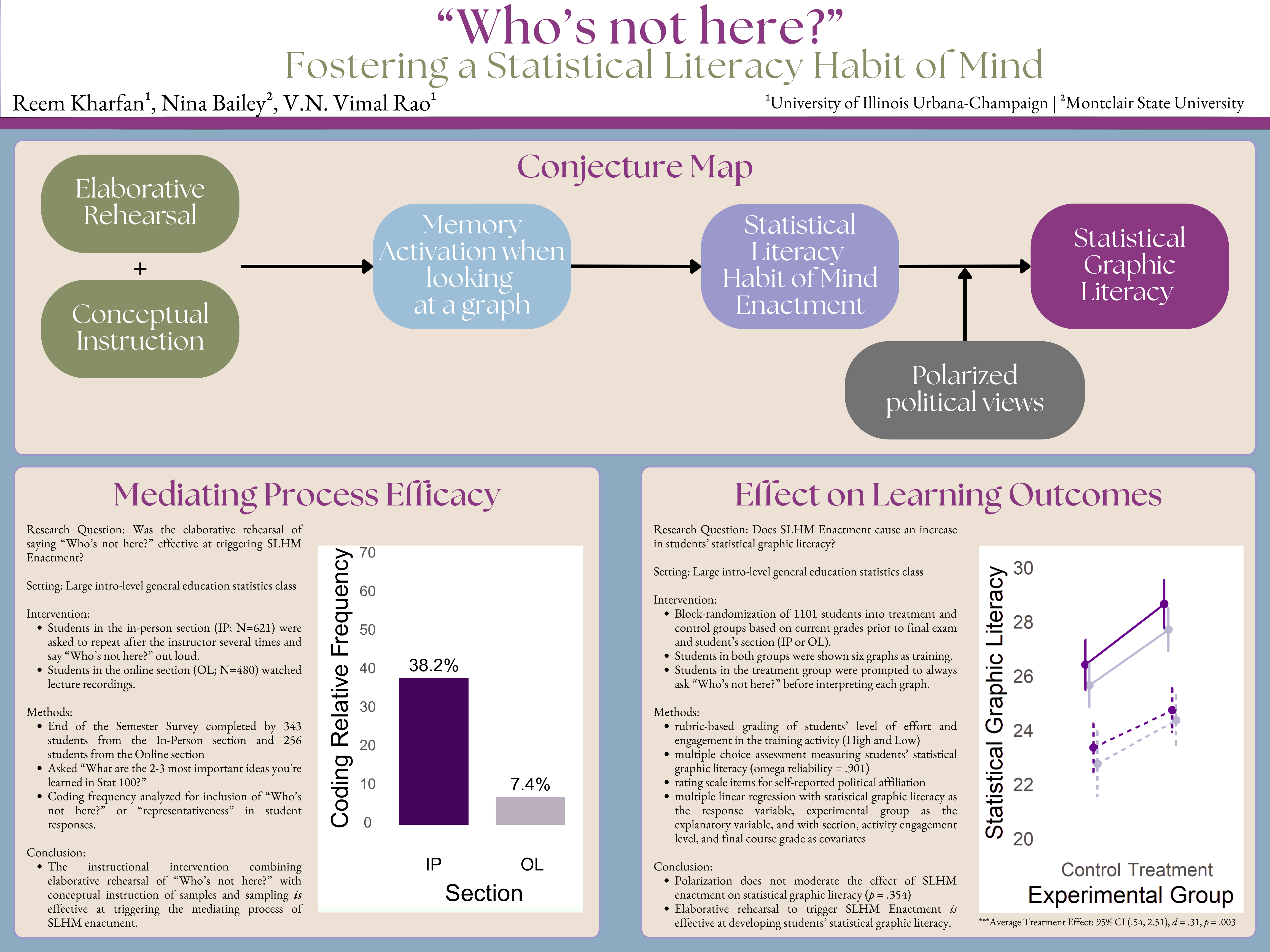By Reem Kharfan (University of Illinois)
Information
In our era of hyper-political-polarization, where politicians and advocacy groups sometimes use questionable data and graphs to support their claims, developing students’ statistical literacy is of utmost importance. Here, we focus on students’ questioning of samples in terms of sampling bias, sampling strategy, and how that should impact interpretation. Specifically, we ask whether the question “Who’s not here?”, when classically conditioned through elaborative rehearsal, can serve as a conceptual anchor to develop a habit of mind in which students’ use their conceptual understanding of representativeness to evaluate the external validity of a sample as part of their interpretation of graphs. We recruited 1090 students from an in-person (N=599) and online (N=491) section of a large general education introductory statistics course to participate in a block-randomized experiment. Participants in both the treatment and control group were shown 10 graphs each at two different timepoints one week apart, and were asked to interpret the graph. The treatment group was additionally prompted “What is the first question you should ask about this graph?”, to which the answer is “Who’s not here?”, to reinforce the anchor. We then measured students’ critical statistical literacy by presenting 8 graphs to them and asking them to interpret the graph in a short paragraph. Preliminary results suggest that the intervention is effective at conditioning students to remember to ask “Who’s not here?”. Full results of this study will be discussed in terms of how statistics teachers can help students critically consume information presented in graphs.

